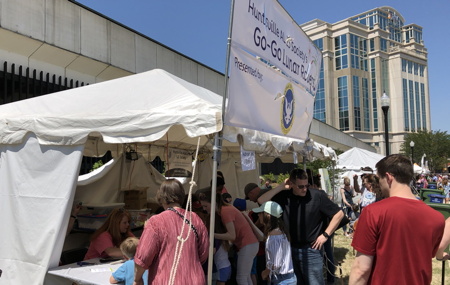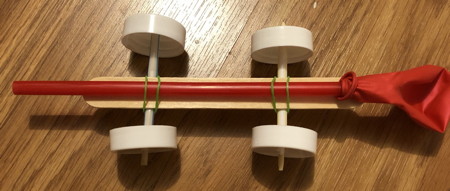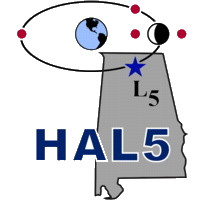
HAL5 has the pleasure of being part of
Art Huntsville annual Panoply Arts Festival STEAM
Interactive activity since 2014. STEAM is "Science, Technology, Engineering, and Mathematics, together with Arts (STEAM)."
It is a great opportunity to engage and to have fun with the kids on
building and testing science theme gadgets while passing
along some STEM related facts about the the gadget that they are building. The
arts aspect of the STEAM draw up on design principles and encouraging creative solutions.
Panoply 2019: Design Your Own Mission Patches
As part of the celebration of the 50th anniversary of the Apollo 11 moon landing, HAL5 and Janet's Planet
will be bringing "Design Your Own Mission Patches" to the 2019 Panoply. More information coming soon.
Panoply 2018: Go-Go Lunar Rover
To kick start the celebration for the 50th anniversary of the Apollo 11 launch and landing,
HAL5 chose a balloon powered rocket rover for the Panoply 2018. We use
plastic bottle caps as the wheels, straw and bamboo stick as axel, plastic straw and ballon as the
motor for the lunar racer. Brand new plastic bottle caps were purchased and used in this
activity to ensure sanitary and wheel consistency. Volunteer pre-assembled majority of the axels
and 'rocket motor.' The kids did the final assembly with guidance from our volunteers. We
also have an advance table where kids can assemble everything from scratch!
A testing table was set up to allow the kids to race their rovers with other kids.
What's STEAM activities without arts! The kids painted their rovers with markers.
Panoply 2018 was the first Panoply in a long time that we did not have any rain. The
picture perfect weather brought out lots of kids. The kids made about 2100 rovers. We had
to use some left over caps of various sizes to tie us over.


Recycling old CDs can be fun! To demonstrate Newton's Third Law, HAL5 selected a CD hovercraft
activity for Panoply 2017. Arts Huntsville had a lot old, donated CD that we reused as
the hovercraft body. A push-pull plastic cap was used as an air flow valve, and a ballon.
for use
Panoply 2016: Lava Layers
Oil and Water Really Don't Mix
Panoply 2015: Squiggle Bot Art
Dance Little Robot! Dance! Make Me Some Arts!
HAL5 teamed up with local hands-on science center, Sci-Quest,
to do a squiggle bot art. Demonstrating the unique patterns drawn by the
3D-printed bots due to shift in center-gravity, pen types, and momentum
arm length.
Panoply 2014: Creative Catapult and Cosmic Comet Testing Stations
Mars Bugs Attack! and Through The Fabric of the Universe
This was our first venture in the Panoply Arts Festival's STEAM Interactive.
HAL5 hosted the testing station for the "the Color Comet and the Creative
Catapult." To make things fun and to follow the spirit of Panoply, a carnival like
atmosphere was chosen for the kids to "test" out their creations.
HAL5 member, Ed Kiker created the two space-theme painted canvas that were mounted to a PVC pipe frame.
The Creative Catapult allows the kids to investigate fling object's behavior
as a function of the object’s air resistance, mass, and catapult arm block placement.
The items propelled were pinto and navy beans, elbow and bow tie pasta, and cotton balls.
For the backdrop, we went with a Mars theme featuring an astronaut
geologist, and a bunch of Martian bugs that the kids needed to hit by
slinging the various objects using the catapults. We drew the bugs on
clear plastic 16 oz. cups and then hung them on various backdrop
locations. This allowed us to position the "bugs" easily, and allowed
the kids to see what objects ended up in a specific cup. It was a pretty
challenging but fun activity. It turned out that bow tie pasta offered
the right amount of mass and air resistance to be fairly accurate.
As the Colorful Comet is meant to be "thrown like a paper airplane, we
decided to have the kids try throw the comet into holes in the backdrop.
A simple black background with two galaxies was selected. At the center
of each galaxy was a hole for the kids to aim the comet into. Due to the
shape and lightness of the comet, our volunteers instructed the kids to
arc their throws, and try different angles and forces.
f



